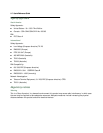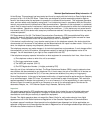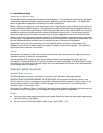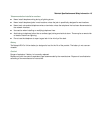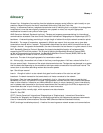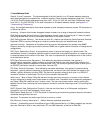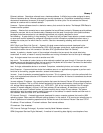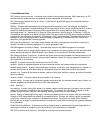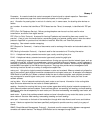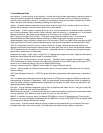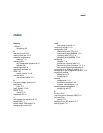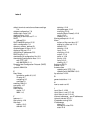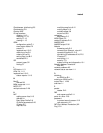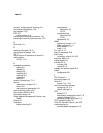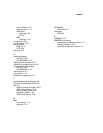4 User’s Reference Guide
ISP (Internet service provider): A company that provides Internet-related services. Most importantly, an ISP
provides Internet access services and products to other companies and consumers.
ITU (International Telecommunication Union): United Nations specialized agency for telecommunications.
Successor to CCITT.
K56flex: A modem data transmission technology standard created by Lucent Technologies and Rockwell
International. Its purpose is to take advantage of the largely digital portions of the telephone system in order to
exceed the theoretical speed limitations of data transmission over analog telephone lines. A competing
technology called “x2,” created by U.S. Robotics/3Com, performs a similar function. In February, 1998, the
interested parties agreed on a unified standard called V.90, also known as V.PCM, which merges the K56flex
standard with the competing x2 standard. In September, 1998, the International Telecommunications Union is
expected to ratify the unified standard, thereby allowing interoperability of modems and ISPs’ central site
equipment, with appropriate firmware upgrades.
LAN (Local Area Network): A privately owned network that offers high-speed communications channels to
connect information processing equipment in a limited geographic area.
MIB (Management Information Base): A standardized structure for SNMP management information.
modem: A device used to convert digital signals from a computer into analog signals that can be transmitted
across standard analog (not ISDN) telephone lines. Modem is a contraction of modulator-demodulator.
NAT (Network Address Translation): A feature that allows communication between the LAN connected to the
Netopia ISDN Router and the Internet using a single IP address, instead of having a separate IP address for
each computer on the network.
NetBIOS: A network communications protocol used on PC LANs.
network: A group of computer systems and other computer devices that communicate with one another.
network administrator: A person who coordinates the design, installation, and management of a network. A
network administrator is also responsible for troubleshooting and for adding new users to the network.
network log: A record of the names of devices, location of wire pairs, wall-jack numbers, and other information
about the network.
network number: A unique number for each network in an internet.
network range: A unique set of contiguous numbers associated with an extended network; each number in a
network range can be associated with up to 253 node addresses.
node: See host.
non-seeding: A router setting that causes it to request network number and zone information from any other
routers on the network connected to the non-seeding port. If it receives this information, it begins to route
packets through that port. See also hard seeding, seeding, seed router, and soft seeding.
packet: A group of fixed-length binary digits, including the data and call control signals, that are transmitted
through an X.25 packet-switching network as a composite whole. The data, call control signals, and possible
error control information are arranged in a predetermined format. Packets do not always travel the same
pathway but are arranged in proper sequence at the destination side before forwarding the complete message
to an addressee.
Packet-Switching Network: A telecommunications network based on packet-switching technology, wherein a
transmission channel is occupied only for the duration of the transmission of the packet.
PAP (PPP authentication protocol): A method for ensuring secure network access.



